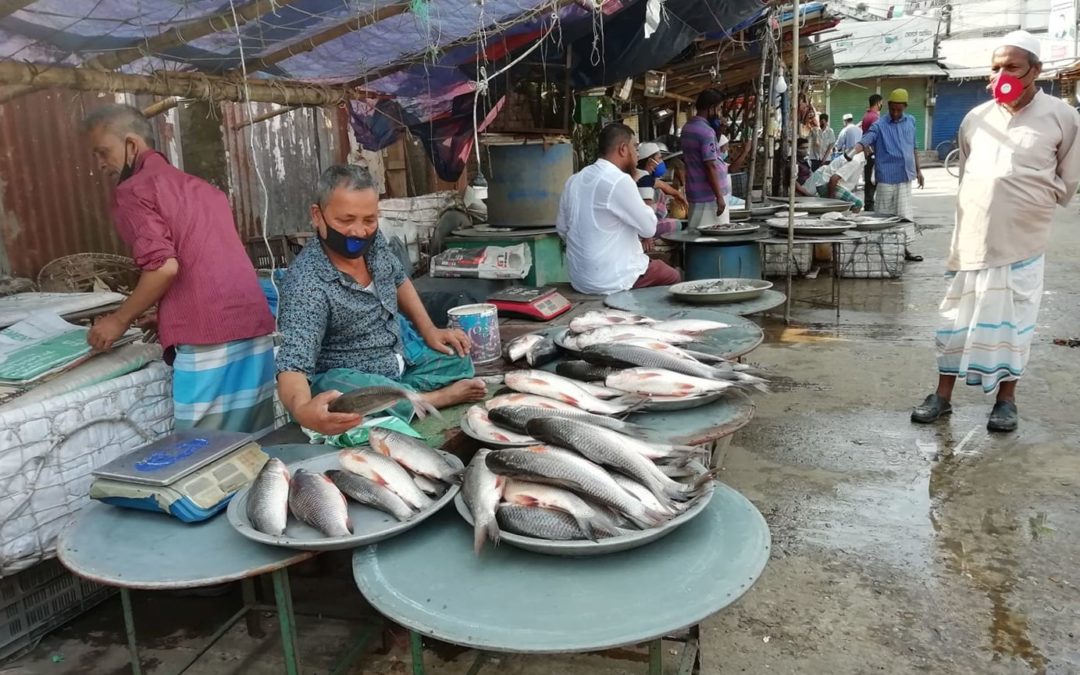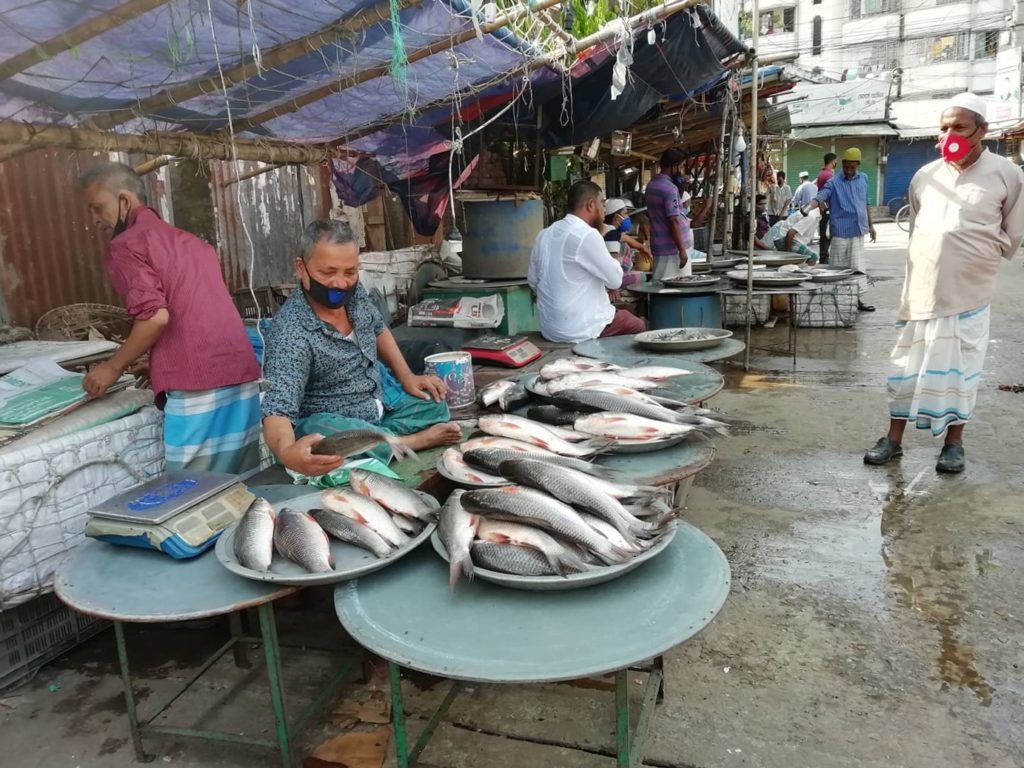In response to COVID-19, big data and digital tools provide surprising opportunities for food systems to rebuild
Through seven conversational sessions, we engaged food system stakeholders from around the world to examine on-the-ground realities, emerging digital solutions, and big data opportunities that have arisen from the pandemic.
While the recent pandemic has resulted in a slew of challenges for farmers and consumers alike, surprising opportunities have begun to appear that could pave the way for a new and more resilient global food system to emerge.
Farmers have moved to social media platforms to connect with consumers. Extension workers are up-skilling in online training courses. A culture shift is enabling wider adoption of digital technologies. Agricultural researchers and professionals leaning in to data and digital tools in order to understand and improve economic and social realities.
These area just some of the scenes described by panelists in our digital forum on COVID-19 and food security.
Between 30 June and 11 August, we hosted seven sessions that mapped out the direct impacts of COVID-19 across food value chains and gleaned data-driven recommendations and solutions moving forward. We heard from 27 researchers, smallholder farmers, young agriprenuers, value chain experts, and founders of agri-tech start-ups, among others, who brought in diverse perspectives on both regional and global situations.
The digital forum began with an overview of challenges and opportunities presented by the pandemic, examined input supply chains and on-farm realities, explored tools for agile adaptation, discussed bridging gaps and building resiliency (part one and part two), considered future food systems, and dug into data in a crisis climate.
Here’s our synthesis of challenges and solutions, as well as some surprising opportunities for big data and digital to rebuild more resilient food systems in the long-term.
Challenges
The digital forum dialogues affirmed the growing body of data and research that indicates all aspects of food systems, global and local, have been affected by the pandemic. The crisis has highlighted longstanding, systemic issues in food systems and exacerbated pre-existing inequalities.
Panelists also stressed that the effects of the pandemic are not experienced in a vacuum; farmers and other food systems actors are facing severe weather events, combatting crop pests and diseases, working against other negative consequences of global climate change, and dealing with chronic data, capacity, and resource deficiencies, in addition to the widespread consequences of COVID-19.
The key food system challenges identified in the digital forum include:
- Increased food insecurity. The pandemic has spiked food insecurity across many regions of the world and highlighted some of the underlying problems in food systems: market inefficiencies, infrastructure and communication gaps, lack of agility and crises-responses;
- Disruptions to product markets, job markets, and financial markets. COVID-19 containment measures have caused massive disruptions for farm activities, businesses, supply chains, agricultural inputs, capital flows, disposable incomes, household food security, and smallholder access to finance;
- Compounding challenges. Farmers in many regions face multiple, ongoing challenges such as locust invasions, droughts, and cyclones in addition to the impacts of COVID-19.
- Lack of digitally available agricultural and health information. Farmers have been in short supply of information on the pandemic, as well as lacking advice on crops, livestock, and markets.
- Difficulty communicating with extension agents, accessing markets, and sourcing labour. Movement restrictions and social distancing protocols have prevented farmers from selling produce at in-person markets and from sourcing sufficient labour for time-sensitive farm activities. Smallholder farmers in particular have struggled to access large e-commerce platforms and digital markets.
- Insufficient data. Lack of real-time, accurate data has inhibited the development of policies and practices that respond quickly and adapt to the changing realities of the pandemic.
- Disconnected data systems. The digital infrastructure of the food system still has many gaps; data systems need to be more interconnected and smallholder farmers need more digital communication channels.
- Heightened pre-existing inequalities. Women farmers and migrant workers have been hit especially hard by the pandemic and have fewer opportunities to earn a living and receive training in agricultural practices.
- Slow responses. Gaps in infrastructure and lack of cohesiveness within supply chains made authorities and food system actors slow to react; the lack of data on crops, climate, prices, and markets, prevented early, informed decisions.
Solutions
Panelists identified a set of positive trends in solutions to tackle the challenges posed by the pandemic. While digital solutions alone can by no means solve the chronic issues that underlie agriculture and food systems, the combination of effective tech and tools plus data-driven, holistic, community-led approaches could enhance food systems’ ability to adapt to shocks. Furthermore, if these solutions are able to meet the economic and social realities of their contexts, they have potential to guide and inspire long-term solutions for various systemic issues in agriculture that have been further exposed by COVID-19 crisis.
Solution trends include:
- Improved data collection and connection to digital tools and services. An increasing number of organisations (research institutions, private companies, NGOs) have moved quickly to collect timely data on prices, track market movements, inform policy-making, help farmers adapt their practices, and increasing smallholder access to financial services.
- Satellite data for food security monitoring. Satellite data has increased authorities’, researchers’, and insurance companies’ ability to monitor crops, predict yields, and speed up crisis response time.
- Digital platforms connect farmers to new markets and information. Digital platforms, including social media platforms, are connecting smallholder farmers to new markets, helping them find customers, and facilitating communication with suppliers; in addition to streamlining logistics, these platforms have also focused on automating essential health and agricultural information via SMS, interactive voice response, apps, websites, etc.
- Movement towards online training. Farmer training initiatives have moved online, in simplified formats, often liaising with farmers on the ground via a reduced number of extension agents. Training content now includes, in some cases, a blend of health, crop, climate, business, and market information.
- Adaptation through digital tools. Many organizations that provide digital tools and tech to the agricultural sector have been able to adapt their offerings in order to meet the new and shifting needs of food system actors during the pandemic.
- Increasing availability of offline resources. As the need for digital communication channels for farmers becomes increasingly clear, organizations are focused on ensuring that resources can be accessed offline because internet connectivity remains a challenge in many regions.
- Efficient policies based on historical data. Some local governments have used previous crises experiences to devise efficient policies and ensure local populations have access to sufficient quantities of nutritious foods.
- Improved digital research methods. Agrifood system researchers have improved their use of digital technology, such as conducting more surveys via mobile phones and using remote sensing devices to understand populations and analyse phenomena across extended areas and at a faster pace.
Opportunities
Though the pandemic has placed unprecedented levels of stress on food systems, it has also helped identify major opportunities for long-term innovation and improvement. Some bright spots were unforeseen prior to the pandemic, while others were known but have been validated and clarified by the events of 2020.
Pivotal opportunities for global, cross-sector collaboration to transform food systems that have arisen from the pandemic include:
- Expanded uses of social media networks and mobile phones. Farmers are using mobile phones and social media networks, including WhatsApp groups and hotlines, to facilitate the aggregation, transport, and sale of good, as well access real-time health and market information.
- More direct relationships between producers and consumers. Agricultural produce e-commerce is on the rise in Latin America, Asia, and Africa, bringing consumers and producers closer together. This market shift has the potential to provide consumers with more detailed product information and give farmers more decision-making power.
- Blockchain for increased transparency and communication. Blockchain technology has the potential to close data gaps in food systems, as it provides transparency and more real-time communication.
- Big data for predictive analysis. From anticipating consumer demands to predicting nation-wide food shortages, the pandemic has highlighted the strengths of big data for enabling preventative and proactive responses, rather than reactive.
- Accelerated digital transformation. Reliance on digital tools and technologies due to COVID-19 containment measures has accelerated the digital transformation of the agricultural sector.
- Recognized need for digital innovation. During the pandemic, farmers and other food system actors turned to digital tools out of necessity. Leaning in to this culture shift could open further opportunities for digital interventions, leading to and valuable methods for improving food systems.
- Improved data collection, sharing, and ethical, open collaboration. The pandemic has laid bare the need to utilize and improve data systems, from data collection to collaboration. Accurate, specific, and real-time information is needed to make effective policies and identify inclusive solutions, and complex data systems are needed to make this data FAIR (Findable, Accessible, Interoperable, and Reproducible).
Recordings & session summaries:
- Intro panel | recording & summary
- Input supply chains & on-farm realities | recording & summary
- Tools for agile adaptation |recording & summary
- Bridging gaps & building resilience with digital agriculture platforms – Part 1|recording & summary
- Bridging gaps & building resilience with digital agriculture platforms – Part 2 |recording & summary
- Future food systems |recording & summary
- Data in a crisis climate |recording & summary
Feature photo: Kingkar Shaha / ECOFISH II, WorldFish. Traders and buyers wear face masks and maintain social distance at Biponibag fish market in Chandpur city, Bangladesh.
September 25, 2020
BIG DATA Communications Team
Latest news






